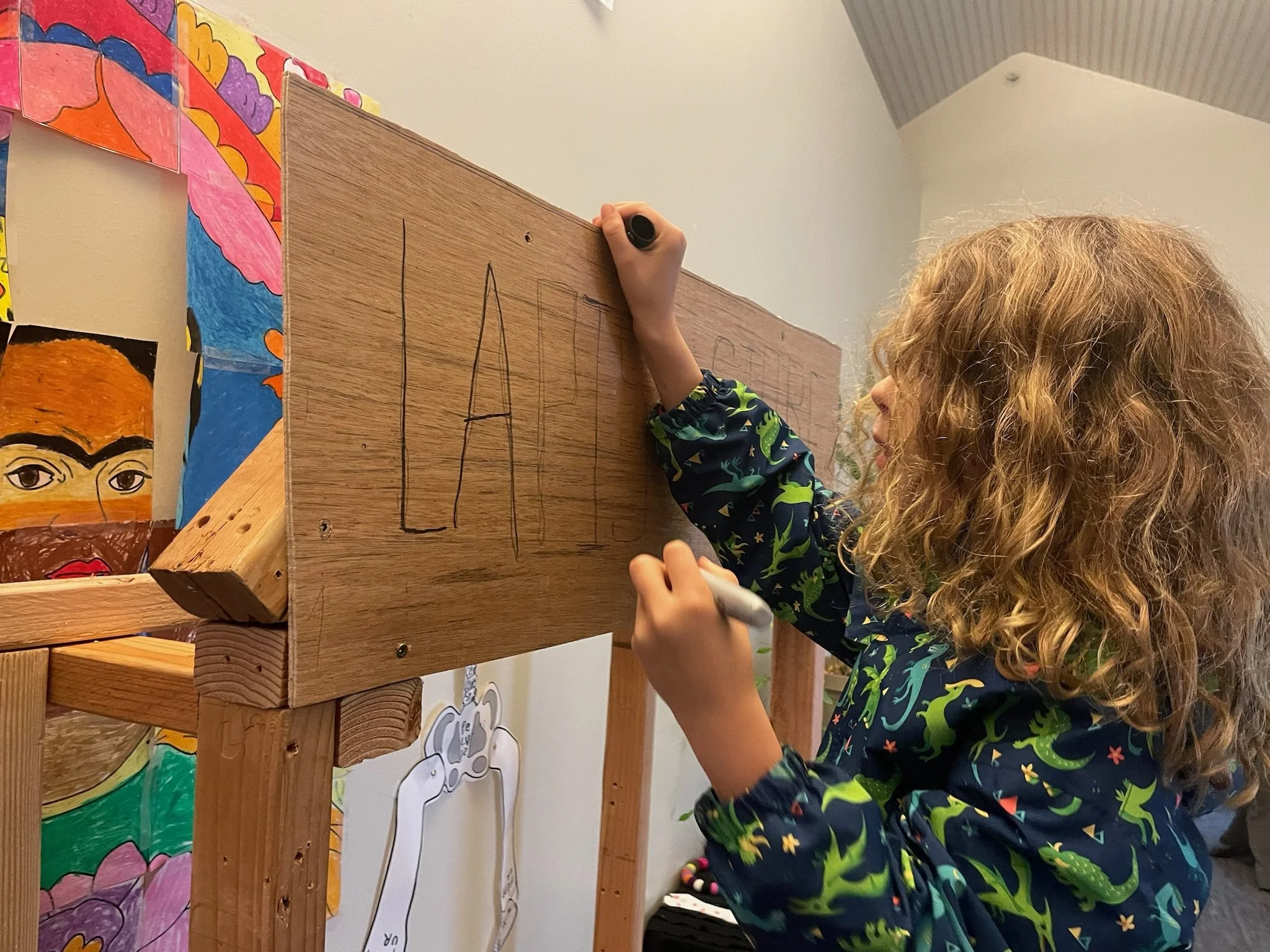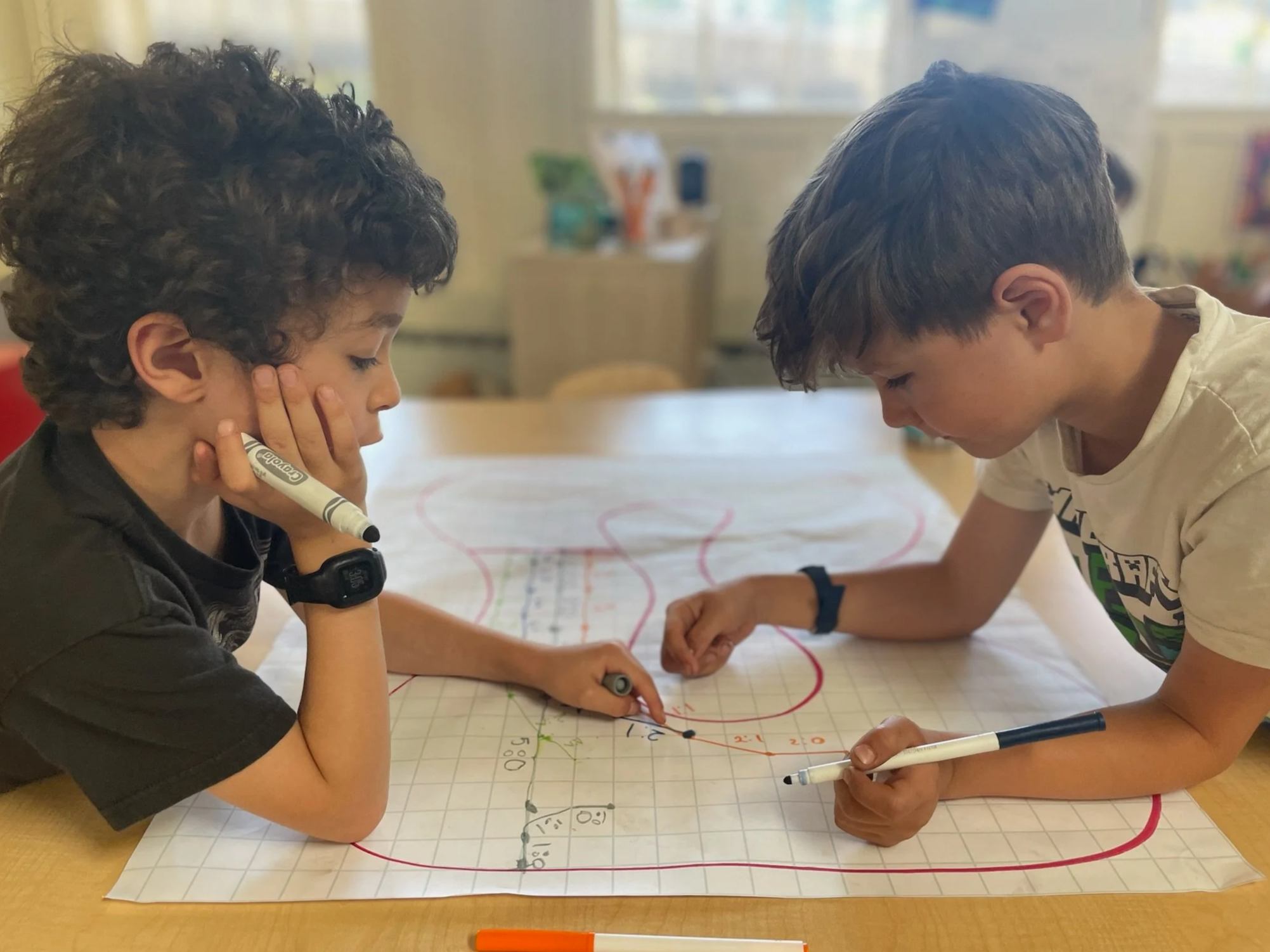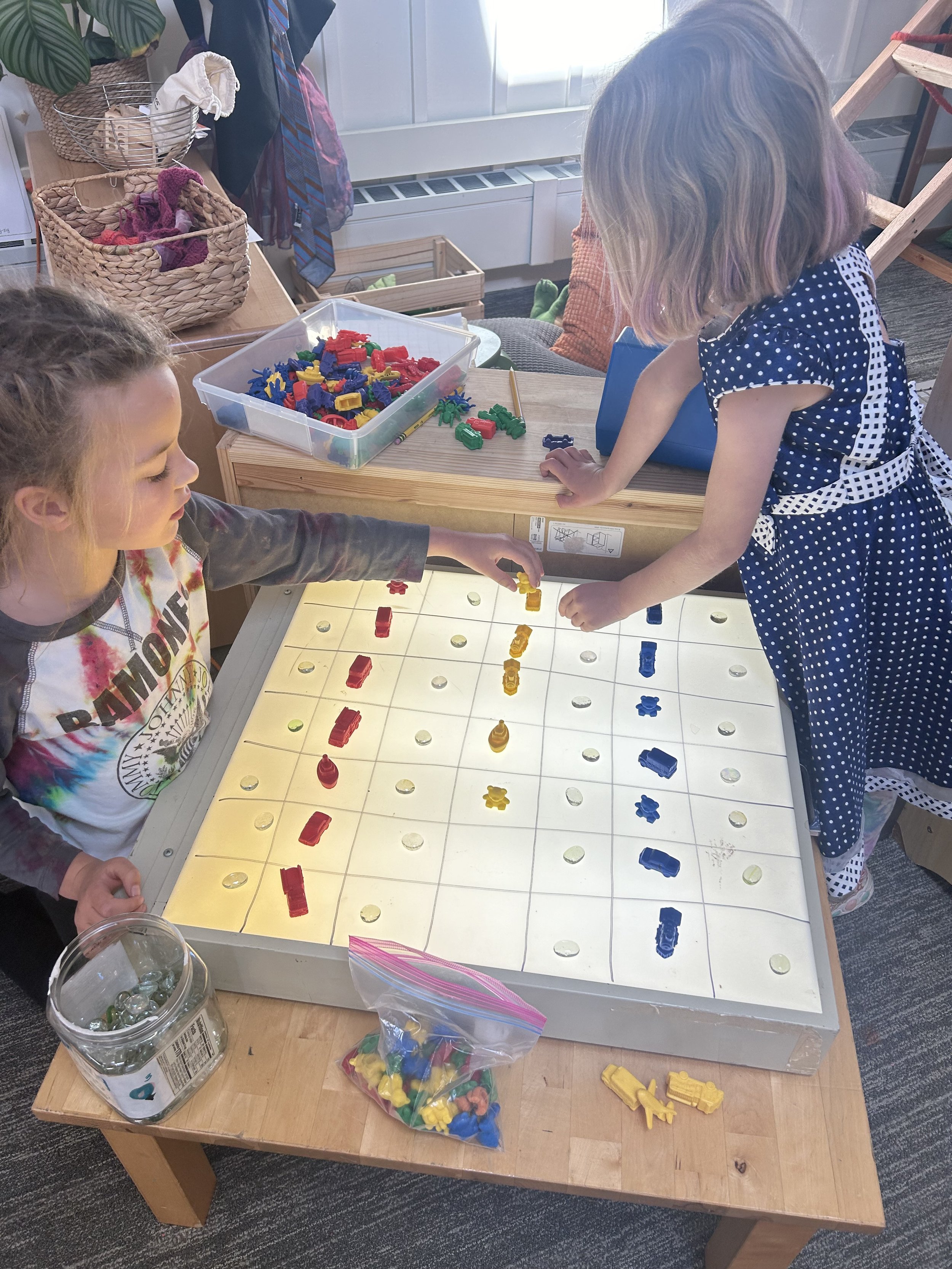
Early Elementary Program
frequently
asked questions
READING & WRITING
How does Brightworks approach literacy for 5-7 year olds?
Literacy is all around us! Brightworks students learn about letters, sounds, and words during play and exploration throughout the day.
They also participate in formal instruction during our small group literacy time.. These groups happen 4 times per week and are based on the structured literacy program Read, Write, Inc. from Oxford University Press.
In this program, students across the early elementary classes are grouped by skill level into groups of 3-6 students. Students’ reading levels are assessed every six weeks – and the groups are reshuffled by level to ensure that they are learning at the right level for them..
We start by teaching the building blocks of words: phonics. This means students learn how to ‘read’ the sounds in words and how those sounds can be written down. Using play and story, we teach students simple ways of remembering these sounds and letters and how to write them. We also practice reading (and spelling) sight words – those that do not play by the rules, such as ‘once,’ ‘have,’ ‘said’ and ‘where.’
The students practice their reading with books that match the phonics and the sight words they know. They start recognizing that they can read and this does wonders for their confidence and excitement for reading. Our collaborators also read aloud to students throughout the day, captivating them with stories and adventures of all kinds. Through a rich diversity of stories, students learn about the people and places in our community and world.
If you’re interested in learning how Read Write Inc. Phonics program works, you’re invited to watch videos and access free eBooks with Oxford Owl's guide for parents. Take a peek at some of the parent resources here.
MATH
How do Brightworks students learn the skills of numeracy and mathematical thinking?
Brightworks aims to empower students to see math as a space for creative problem-solving and our curriculum is designed to help students grow their flexibility and resourcefulness when solving problems.
Students use manipulatives and drawing daily to make concrete connections between patterns, number sense, and strategies for working with numbers like keeping track of quantities, putting amounts together, taking amounts apart, organizing numbers into equal groups, etc.
We use resources from math educators Marilyn Burns and Jo Boeler to guide our curriculum. Both of these resources help us structure student's learning in a constructivist manner: students are given multiple experiences with a pattern or concept before collaborators guide them toward refining strategies to be more efficient, introducing specific strategies, and introducing the mathematical language connected to their observations.
In addition to explicit numeracy practice, math is also woven into projects and content area explorations so that students grow to see mathematics as all around them and inextricably connected to the real world. From graphing heights, making geometrical patterns representing snowflakes or measuring lengths to build a store, math at Brightworks is joyful, exploratory, and gives students increasing capacity to engage with both problem solving and communicating their thinking.
Do all children use shop tools? Do kindergarteners use all the tools?
Students learn to use tools in the woodshop over time. Our learners have explicit “tool training” every year, and they are only able to use the tools once they’ve demonstrated they are able to do so in a safe way. Our shop steward, Tito, is onhand daily as well to oversee tool usage and maintenance, and to support students' use of tools and execution of projects.
Brightworks students learn to use ear protection, protective eyewear, hair ties (for long hair), and safety gloves when indicated. Kindergarteners do not use power saws.
Kids can build the coolest things – as you may see when you are on campus for a tour. From the play structures out back, to the fort in the kindergarten classroom, to a planetarium in the middle school. At Brightworks, we believe that kids are capable – and we love helping them to build their dreams! (And to learn about failure and experimentation along the way.)
Are immunizations required?
Yes. Immunizations are required.
Further Reading
Here are some of the articles we’ve been appreciating that speak to the preservation of curiosity, project-based learning, and play.
Developing resilience through the practice of iteration https://characterlab.org/tips-of-the-week/wiring-for-resilience/
10 Things That Happen When Students Engage in Project-Based Learning - John Spencer was at the recent Learning and The Brain Conference. He shared a number of excellent resources for supporting all learners.
Zones of Regulation at-a-glance - This is a tool we use throughout the lower school to develop a common language for naming emotions and strategies to support one another. Here you will find a compilation of book titles that can be used in conjunction with The Zones of Regulation to illustrate and reinforce social emotional learning. This list is ever-growing, so check back if it’s been a while. Early Learners Book List– Ages 4-11
Play helps children practice key skills and build their strengths - Harvard Health






